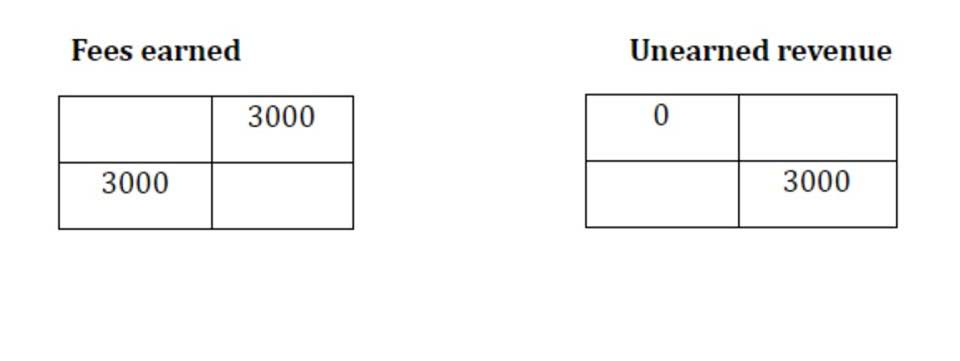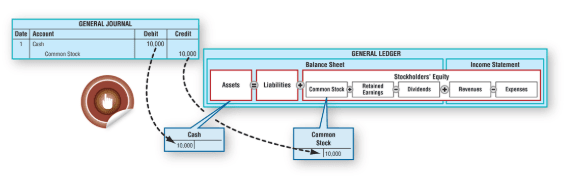
11 Financial is a registered investment adviser located in Lufkin, Texas. 11 Financial may only transact business in those states in which it is registered, or qualifies for Bookstime an exemption or exclusion from registration requirements. 11 Financial’s website is limited to the dissemination of general information pertaining to its advisory services, together with access to additional investment-related information, publications, and links.
Accounting Errors Which do not Affect the Trial Balance
- However, this can add stress to the management due to increasing complexity.
- Reconciliation of accounts is a common practice that can reveal differences needing investigation.
- A correcting entry is made when an error is found in the accounting books, a transaction is recorded in the wrong account, or an amount is wrongfully stated.
- That said, the first step in correcting accounting errors is to identify those errors.
- Mistakes can be detected through regular reconciliation processes, internal or external audits, or when discrepancies appear while preparing financial statements.
- If such errors are left uncorrected, they affect the final accounts of the concern.
They scrutinize the adjustments made to correct errors, assessing whether they accurately reflect the underlying transactions and are appropriately documented. This includes reviewing the adjusting journal entries and ensuring that the restated financial statements provide a true and fair view of the company’s financial position. Primarily, correcting entries help maintain the integrity and accuracy of financial records, so they are an essential practice in accounting. By correcting inaccuracies in recorded transactions, businesses ensure that their financial statements accurately reflect their financial position, performance, and changes in financial position. This, in turn, helps stakeholders make informed decisions about the business’ financial health and prospects. By making the correcting entry, the accountant ensures that XYZ Company’s financial records accurately reflect the purchase of inventory and that the Office Supplies Expense account is not overstated.
Rectification of Errors
- By fixing incorrect records, they refine the validity of the financial reports, which depict the overall financial health, performance, and cash flow of the business.
- This helps maintain the accuracy and integrity of the company’s financial statements and ensures compliance with accounting principles.
- Materiality plays a crucial role in this context as it helps determine the significance of an error and whether it warrants correction.
- This is also a retroactive change that requires the restatement of financial statements.
- If the trial balance is in disagreement, then it is an indication that errors exist in the books of accounts.
- As such, the account was under-debited by $90, while the sales account was under-credited by the same amount.
- In any case, if the errors are not rectified, they will have an adverse effect on the firm’s position in terms of profits or losses and assets or liabilities.
Even with automation and easy-to-use accounting tools, bookkeeping mistakes can happen. Journal entry errors can end up costing your small business time and money. Accounting changes and error correction refers to guidance on reflecting accounting changes and errors in financial statements. Errors can either be small mistakes that don’t affect the overall figures or ones that snowball into greater miscalculations and need more time and resources to identify and repair. Accounting mistakes can keep your small business from running smoothly and hurt growth so it’s important to learn the common types of accounting errors and how to correct them.
Error of Original Entry
- Correcting entries may be required in situations like typographical errors, unrecorded transactions, errors in the application of accounting rules, and duplication or omission of transactions.
- We offer an extensive library of learning materials, including interactive flashcards, comprehensive textbook solutions, and detailed explanations.
- For example, if a company purchases machinery, the cost is not expensed in the year of purchase but spread over the asset’s useful life through depreciation.
- Sometimes, mistakes happen in your accounting records that need to be corrected.
- Our work has been directly cited by organizations including Entrepreneur, Business Insider, Investopedia, Forbes, CNBC, and many others.
- However, for material errors that could influence the decision-making of users of the financial statements, a more comprehensive approach is required.
Error of commission involves debiting or crediting wrong subsidiary account. Upon analysis, the Transportation Expense is overstated (higher than in should be) because the bookkeeper recorded it as transportation expense but was not really a transportation expense. When an amount is entered as the right amount and the right account but the value is wrong, this is an error of commission. Double Entry Bookkeeping is here to provide you with free online information to help you learn and understand bookkeeping and introductory accounting. A good indicator for a transposition error is that the difference (in this case 270) is divisible by 9.
- Their presence suggests errors in the ledger, while adjusting entries are a regular feature of every accounting cycle.
- If the errors are located after the preparation of the final accounts, they will already have impacted the profit or loss of the business.
- For instance, if office rent of £1,000 is mistakenly posted as £10,000, it overstates the expenses and understates the profits.
- Errors should be rectified; otherwise, a business enterprise will not be transparent.
- 11 Financial’s website is limited to the dissemination of general information pertaining to its advisory services, together with access to additional investment-related information, publications, and links.
- Journal entries are necessary for adjusting the balances of ledger accounts for a variety of reasons, including recognizing accruals, liabilities and other expenses.

These errors will influence the profit and loss account and balance sheet. Our prime focus is on unintentional errors, which occur at the clerical level during the normal course of recording, classifying, posting, casting, and so on. Despite the best efforts of the bookkeeper or accountant and the agreement of the trial balance, errors may still continue to prevail. Entries passed to fix accounting error is known as rectification entries. Purchase of goods from Mr Z aggregating to 10,000 erroneously entered in the ledger of Mr.B. To rectify this error, we will have to reverse Mr B’s account and have to credit Mr Z’s account with the amount of goods purchased.

Accrual accounting and double-entry recordkeeping
Rectification of Errors can be addressed by answering the questions of what, why, and how. By debiting the same amount to a suspense account, the balance of the suspense account is reduced to that extent. In any case, if the errors are not rectified, they will have an adverse effect on the firm’s position in terms of profits or losses and assets or liabilities. Although the trial balance is prepared to evaluate accuracy, it does not disclose every type of error.
Rectification of Errors FAQs

They are essential for compliance with accounting standards and principles, such as the matching principle, which dictates that expenses should be matched with the revenues they help to generate. Correcting entries, however, are more ad-hoc adjusting entries and reactive, addressing discrepancies as they arise to ensure the books remain accurate and reliable. Correcting entries in accounting are the journal entries made to rectify errors that were made in the initial accounting procedures. They ensure that financial statements reflect the true view of a company’s status.


This may involve reviewing transaction documentation, interviewing personnel involved in the accounting process, and analyzing the affected accounts in detail. The goal is to gather sufficient information to not only correct the error but also to implement measures that prevent its recurrence. For example, if an expense is mistakenly annotated as revenue, it won’t just misrepresent those two individual accounts but will also inflate the net income recorded on the income statement. It’s important to distinguish between adjusting entries and correcting entries, as both terms can often be misunderstood.
Errors in posting occur when financial transactions are recorded incorrectly either in the journal or subsidiary books. As well as being incorrect, these figures affect all subsequent entries made in the ledger. Auditors also play a critical role in verifying that the company has fulfilled its disclosure obligations. They review the notes to the financial statements to confirm that all required information accounting errors about the error and its correction is disclosed comprehensively and clearly. This review process helps to ensure that the financial statements, as amended, are reliable and meet the necessary regulatory and accounting standards.

